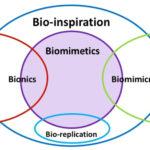Paper, Paradigms for biologically inspired design
Biologically inspired design is attracting increasing interest since it offers access to a huge biological repository of well proven design principles that can be used for developing new and innovative products. Biological phenomena can inspire product innovation in as diverse areas as mechanical engineering, medical engineering, nanotechnology, photonics, environmental protection and agriculture. However, a major obstacle for the wider use of biologically inspired design is the knowledge barrier that exist between the application engineers that have insight into how to design suitable products and the biologists with detailed knowledge and experience in understanding how biological organisms function in their environment. The biologically inspired design process can therefore be approached using different design paradigms depending on the dominant opportunities, challenges and knowledge characteristics. Design paradigms are typically characterized as either problem-driven, solution-driven, sustainability driven, bioreplication or a combination of two or more of them. The design paradigms represent different ways of overcoming the knowledge barrier and the present paper presents a review of their characterization and application.
Learn about our two Decals!
 Click here to find out more about our Fall Bioinspired Design Decal and our Spring Bioinspired Design in Action Decal – ALL MAJORS are welcome.
Click here to find out more about our Fall Bioinspired Design Decal and our Spring Bioinspired Design in Action Decal – ALL MAJORS are welcome.Berkeley BioDesign Community
 Click here to learn about the BioD: Bio-Inspired Design @ Berkeley student organization or here to signup for more info.
Click here to learn about the BioD: Bio-Inspired Design @ Berkeley student organization or here to signup for more info.Search
Student Login






I imagine that the neurological circuits underlying these processes are governed by both 2d spacing maps with their brains as…
to reduce the impact of car accidents, it may be possible to study the force diverting physics of cockroaches to…
you see this type of head-bobbing stability in many avian creatures related to pigeons like chickens. the head ability to…
not like they taught horses how to run! this is an example of convergent evolution where both sea creatures and…
The brain functions in a similar way with neuronal connections. our brains are able to utilize the multiplicity of connections…